Mastering EQ for Better Guitar Tone: Essential Tips & Tricks
Category: Guitar Gear
Unlock the Power of EQ to Transform Your Guitar Tone
Achieving the perfect guitar tone is a quest every guitarist, from beginners to seasoned pros, embarks on. If you've ever felt that your guitar sound just isn't cutting through the mix or seems muddy and lifeless, understanding how to use EQ effectively can be a game changer. Whether you're playing electric or acoustic guitar, soloing or rhythm, the right EQ settings can bring out the best in your instrument, gear, and playing style.
You might have explored different amps, pedals, or even guitars themselves, but often the subtle art of equalization is overlooked or misunderstood. This guide is tailored to guitar enthusiasts and musicians eager to deepen their knowledge of EQ specifically for guitar tone enhancement. Unlike generic articles, this post dives into practical approaches, using real-world examples, that will help you sculpt your sound with confidence.
By the end, you'll understand the key frequency ranges affecting your guitar tone, how to identify and cut problematic frequencies, and use EQ creatively to fit your style and music production needs. Ready to take control of your guitar’s voice and craft a tone that truly stands out? Let’s dive in and explore the essential EQ techniques that will elevate your playing and recordings.
- Unlock the Power of EQ to Transform Your Guitar Tone
- Understanding EQ Basics: What is EQ and How Does it Affect Guitar Tone?
- Key Frequency Ranges for Guitar: Identifying Critical Bands and Their Impact on Your Sound
- Common Guitar Tone Issues and How EQ Can Fix Them
- Using EQ with Different Guitar Styles and Genres
- Practical EQ Techniques in the Studio and Live Settings
- How to Use Parametric vs Graphic EQ for Guitar Tone
- The Interaction Between Guitar Gear and EQ: Amps, Pedals, and Interfaces
- Creative EQ Tips: Enhancing Harmonics, Presence, and Texture in Your Guitar Tone
- Setting Up EQ for Recording vs Live Performing: Tailoring Your Approach to Context
- Common Mistakes When Using EQ on Guitar and How to Avoid Them
Understanding EQ Basics: What is EQ and How Does it Affect Guitar Tone?
Equalization (EQ) is a fundamental tool in shaping and refining your guitar tone, both in live settings and studio productions. At its core, EQ allows you to adjust the balance of different frequencies within your guitar signal, boosting or cutting specific tonal ranges to create a sound that fits your musical context perfectly. Think of EQ as a sonic sculpting tool: it gives you control over the high, mid, and low frequencies that make up your guitar’s voice, helping to emphasize clarity, warmth, brightness, or punch depending on your needs.
When you apply EQ to your guitar tone, you’re essentially tailoring how your instrument interacts with other elements in a mix or how it resonates through your amp and effects chain. For instance, cutting muddy low-mid frequencies can add clarity and definition, while boosting presence and high mids can make your guitar stand out more in a dense band arrangement. Understanding these basic concepts of EQ not only improves your tone instantly but also empowers you to fix common issues such as muddiness, harshness, or lack of definition—problems many guitarists struggle with but can be resolved with precise equalization.
By mastering EQ basics, you’ll be able to:
- Identify the key frequency ranges that define guitar tone.
- Use EQ to solve sonic problems like muddiness or shrillness.
- Enhance your guitar’s natural characteristics to suit various genres and playing styles.
In the following sections, we’ll break down these frequency ranges and demonstrate practical EQ techniques that will elevate your guitar tone to a professional level.
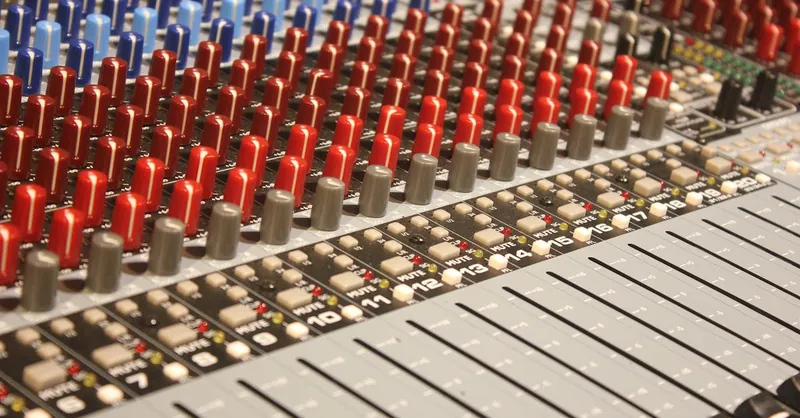
Image courtesy of Pixabay
Key Frequency Ranges for Guitar: Identifying Critical Bands and Their Impact on Your Sound
When shaping your guitar tone with EQ, understanding the key frequency ranges is essential. Each part of the frequency spectrum contributes uniquely to how your guitar sounds in both solo and band contexts. By identifying and targeting these critical bands—bass, midrange, and treble—you can precisely control tonal qualities such as warmth, clarity, presence, and brightness, all of which are crucial for creating a balanced and compelling guitar sound.
Bass Frequencies (80Hz – 250Hz)
The bass range provides the foundation and body of your guitar tone. Frequencies between 80Hz and 250Hz contribute to the fullness and warmth of your sound. Too much emphasis here can cause muddiness, especially if your guitar signal overlaps with the bass guitar or kick drum in a mix. Conversely, cutting excess low-end can clear up space and tighten your sound, making chords and riffs more articulate without losing thickness.
Midrange Frequencies (250Hz – 2kHz)
The midrange band is arguably the most critical for guitar tone shaping. Spanning approximately 250Hz to 2kHz, this range defines the character and punch of your guitar. The lower mids add warmth and body, while the upper mids offer presence and help your guitar cut through a dense mix. Boosting frequencies around 800Hz to 1kHz often enhances note definition and attack, making solos and rhythm parts more distinct. On the other hand, harshness or honkiness can sometimes occur in this range, so careful cutting between 500Hz and 700Hz can tame a boomy or nasal sound.
Treble Frequencies (2kHz – 8kHz and Beyond)
The treble frequencies influence the brightness, sparkle, and airiness of your guitar tone. Frequencies from 2kHz up to 8kHz and higher add the detail and articulation that bring your playing to life. Boosting around 3kHz to 5kHz can increase attack and presence, helping your guitar cut through in live performances or recordings. However, too much boost in the higher treble can introduce unwanted harshness or string noise, so subtle and precise adjustments are key.
By targeting these distinct frequency zones, you gain control over your guitar's sonic footprint, balancing body, clarity, and shine to craft a tone that fits perfectly within any musical setting. In the next sections, we’ll explore specific EQ techniques for each frequency band to help you tame problematic tones and highlight your guitar’s best qualities.
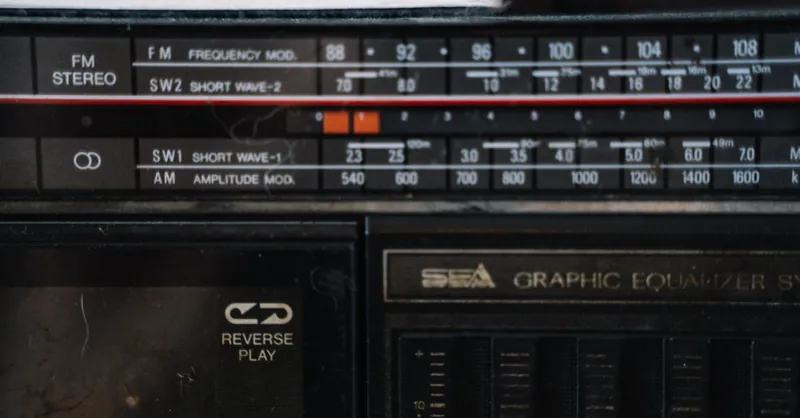
Image courtesy of Anna Tarazevich
Common Guitar Tone Issues and How EQ Can Fix Them
Even the best guitar setups can suffer from tone problems that hinder your playing and recordings. Fortunately, EQ is your most powerful ally for tackling common guitar tone issues by surgically targeting the frequencies responsible for muddiness, harshness, boxiness, and thinness. Understanding how these problems manifest in your sound and applying precise EQ corrections will unlock a clearer, more balanced guitar tone.
1. Muddiness: Clearing the Low-Mid Overload
Muddiness often occurs when excessive energy accumulates in the 100Hz to 400Hz range. This results in a tone that sounds boomy, indistinct, and cluttered—especially noticeable when playing chords. To fix muddiness:
- Cut around 200Hz to 350Hz with a narrow Q-band to reduce overlapping low mids.
- Avoid drastic cuts to maintain natural warmth; subtle reductions often work best.
- Complement this by ensuring the bass frequencies below 100Hz don’t overpower your guitar.
2. Harshness: Soften Aggressive High Mids and Treble
Harshness usually stems from excessive energy between 2kHz and 5kHz, causing the tone to sound brittle, shrill, or fatiguing to the ear. This is common when boosting presence too much or using certain pickups and pedals. To address harshness:
- Reduce frequencies around 3kHz to 4kHz slightly with a tight cut.
- Use a gentle high-shelf cut above 6kHz if string noise or fizziness is present.
- Try boosting lower mids (around 800Hz) to restore warmth after taming harsh peaks.
3. Boxiness: Eliminating Hollow, Nasal Resonances
Boxiness gives the guitar tone a hollow, nasal vibe largely from resonance build-up in the 300Hz to 700Hz range. This can make your guitar sound unnatural or “in a box,” often clashing in a dense mix. To fix boxiness:
- Apply a moderate cut in the 400Hz to 600Hz area.
- Use a medium Q-band to avoid overly dulling the tone.
- Experiment with subtle boosts in the upper mids (1kHz to 2kHz) to regain definition after cutting boxiness.
4. Thinness: Adding Fullness and Body
A thin guitar tone lacks richness and fullness, often sounding weak or brittle. This usually happens from insufficient low-mid content and can leave your guitar struggling to sit well in a mix. To fix thinness:
- Boost gently around 120Hz to 250Hz to add warmth and body.
- Add presence by emphasizing 1.5kHz to 3kHz to ensure clarity isn’t sacrificed for thickness.
- Avoid over-boosting lows below 80Hz, which can muddy the sound further.
By identifying these common guitar tone problems and selectively applying EQ cuts or boosts within their characteristic frequency ranges, you can dramatically improve the clarity, warmth, and overall balance of your guitar sound. Mastering this approach to EQ empowers you to fix sonic issues before they define your tone, giving you full control over your musical expression.
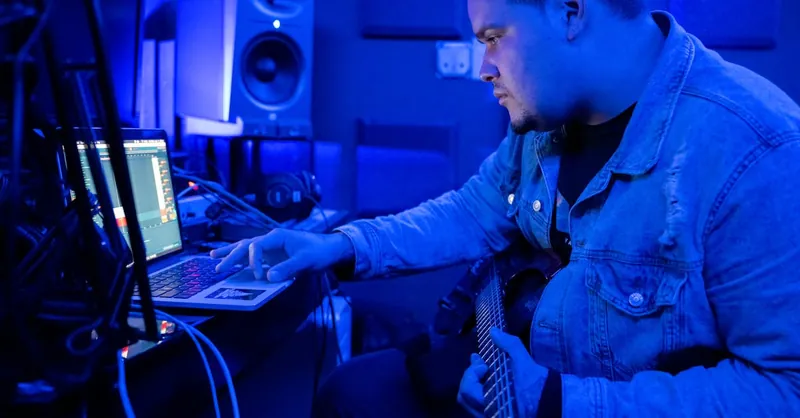
Image courtesy of Brett Sayles
Using EQ with Different Guitar Styles and Genres
Different guitar styles and genres call for tailored EQ approaches to enhance the unique tonal characteristics that define them. Understanding how to customize your EQ settings for blues, rock, metal, jazz, and ambient guitar tones allows you to bring out the best in your playing and blend seamlessly within the musical context.
Blues Guitar Tone EQ Tips
Blues guitar typically embraces warmth, soulful expressiveness, and midrange richness. When using EQ:
- Boost low mids (around 200Hz – 400Hz) to add body and fullness that enhances the natural tone of your guitar and amp.
- Emphasize the upper mids between 800Hz and 1.2kHz to bring out note attack and sustain, crucial for emotive soloing and vibrato.
- Apply a gentle high-frequency boost around 3kHz to 5kHz to add a subtle sparkle without harshness, preserving the vintage vibe.
Rock Guitar Tone EQ Tips
Rock guitar demands punch and presence with a balanced midrange that cuts through the mix without sounding overly aggressive:
- Boost midrange frequencies between 800Hz and 1.5kHz to sharpen note definition and drive.
- Cut some low mids slightly around 300Hz if the guitar sounds muddy or congested.
- Add brightness by boosting treble frequencies near 4kHz, but avoid excessive harshness which can fatigue the listener.
Metal Guitar Tone EQ Tips
Metal tones require tightness, aggression, and clarity, especially with high-gain distortion and complex riffing:
- Scoop the mids slightly by cutting between 400Hz and 700Hz to achieve the classic “metal scoop” sound, creating space in the mix.
- Boost low frequencies between 80Hz and 150Hz for powerful, chunky rhythm tone foundation.
- Emphasize presence and bite by adding gain between 3kHz and 6kHz, enhancing pick attack and articulation.
- Use careful high-frequency cuts above 6kHz to reduce unwanted string noise and harshness.
Jazz Guitar Tone EQ Tips
Jazz guitar benefits from a smooth, warm tone with natural resonance and body:
- Boost low mids in the range of 250Hz to 450Hz to enrich the fundamental frequencies and add warmth.
- Moderate the high mids around 1kHz to 2kHz to keep the sound soft and round, avoiding piercing frequencies.
- Lightly roll off high frequencies above 5kHz to reduce brightness and preserve mellow articulation, especially for hollow-body and clean tones.
Ambient Guitar Tone EQ Tips
Ambient guitar focuses on lush textures, spaciousness, and ethereal soundscapes created with effects and modulation:
- Emphasize the mid and upper midrange around 600Hz to 2kHz for presence while maintaining clarity amid effects.
- Boost high frequencies gently near 5kHz to 8kHz to add shimmer and airiness without harshness.
- Cut excess low end below 150Hz to prevent muddiness, ensuring that reverb and delay tails remain clear and defined.
By adjusting your EQ with these genre-specific considerations, you can create guitar tones that not only suit your style but also enhance your overall mix. Mastering EQ customization per musical genre lets you unlock new sonic dimensions and express your artistry with greater depth and impact.
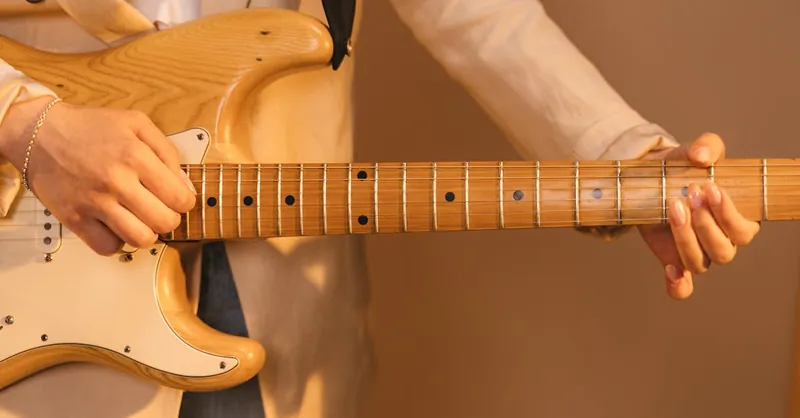
Image courtesy of ANTONI SHKRABA production
Practical EQ Techniques in the Studio and Live Settings
When it comes to using EQ for better guitar tone, practical techniques vary slightly depending on whether you’re working with amp simulators, pedals, or mixing guitar tracks in a studio or live environment. Each setting offers unique challenges and opportunities to shape your sound effectively with EQ.
Using EQ with Amp Sims and Pedals
Amp simulators and pedal-based rigs often come with built-in EQ sections, which are powerful tools that can drastically change your tone before it hits the mix or PA. Here are some tips to maximize EQ in these contexts:
- Start with subtractive EQ — rather than boosting frequencies aggressively, try cutting problematic bands to avoid adding unwanted noise or distortion.
- Tame low-end rumble and muddiness around 100Hz to 300Hz early in your amp sim or pedal chain to create a tight foundation.
- Enhance presence by boosting upper mids (around 2kHz to 4kHz) to help your guitar cut through the band or dense effects layers.
- Be cautious with high-frequency boosts above 5kHz, as these can introduce harshness or excessive string noise, especially with distortion pedals.
- When using a multi-band EQ pedal, experiment with dynamic EQ options to adapt your tone depending on what you play (e.g., cleaner tones get more subtle boosts than distorted sounds).
EQ Tips for Mixing Guitar Tracks
Whether mixing recorded guitar parts in your DAW or tweaking stage sound with a digital mixing console, clear EQ decisions are essential to sitting your guitar perfectly in the mix:
- High-pass filtering is your friend: Use a gentle high-pass filter around 80Hz to 120Hz to remove unnecessary sub-bass rumble that muddies the mix without sacrificing body.
- Cut overlapping frequencies: Identify and reduce midrange frequencies in the guitar track that clash with vocals or keyboards, often around 400Hz to 600Hz.
- Fine-tune attack and definition by boosting around 1kHz to 3kHz: This range adds clarity to riffs and solos and helps the guitar stand out without being overly harsh.
- Use narrow Q-band cuts to eliminate honkiness or boxiness: Surgical reductions in 300Hz to 700Hz can clean up the tone without dulling the overall sound.
- Avoid over-EQing: Make small, purposeful adjustments and frequently compare with the bypassed EQ to preserve natural tone integrity.
Live Sound Considerations
In live scenarios, EQ adjustments often aim to combat acoustic issues in different venues and ensure your guitar cuts through without causing feedback or clashing with other instruments:
- Use graphic EQ on stage rigs to notch out feedback-prone frequencies, often in the 2kHz to 6kHz range.
- Emphasize midrange frequencies during live play to maximize presence and clarity in noisy environments.
- Remember that drastic EQ boosts can cause masking or feedback on stage — focus on subtle cuts first.
- If using in-ear monitors or stage wedges, tailor your EQ so your guitar tone remains natural and balanced without excessive brightness or harshness.
By mastering these practical EQ techniques across amp sims, pedals, studio mixes, and live shows, you’ll gain unparalleled control over your guitar tone. This hands-on EQ approach ensures your guitar consistently sounds polished, dynamic, and appropriate for every musical context.
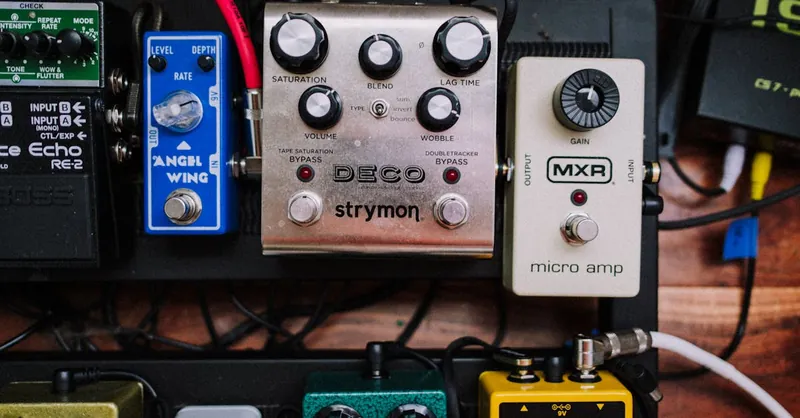
Image courtesy of Kelly
How to Use Parametric vs Graphic EQ for Guitar Tone
When it comes to shaping your guitar tone with EQ, understanding the differences between parametric EQ and graphic EQ is essential to selecting the right tool for your sonic goals. Both types of EQ have unique advantages and applications in guitar tone sculpting, whether you’re fine-tuning subtle tonal details, correcting problem frequencies, or crafting a signature sound.
Parametric EQ: Precision and Flexibility
Parametric EQ provides detailed control over frequency, bandwidth (Q), and gain, making it the ideal choice for precise tone shaping and surgical corrections. With parametric EQ, you can:
- Select specific frequency bands for boosting or cutting, allowing targeted adjustments without affecting the surrounding spectrum.
- Adjust the Q-value or bandwidth to widen or narrow the affected frequency range, perfect for removing narrow resonances, harshness, or boxiness.
- Fine-tune gain control for subtle boosts or deep cuts, enabling delicate tone sculpting without compromising natural sound.
Because of this precision, parametric EQ is favored in studio mixing and pedal setups where detailed control over guitar tone is necessary. It shines when you need to eliminate feedback-prone frequencies, tame harsh peaks, or enhance midrange presence with surgical accuracy. Parametric EQ also excels in multi-band plugin forms, letting you dynamically adapt your tone depending on playing context.
Graphic EQ: Quick, Intuitive Tone Shaping
Graphic EQ, on the other hand, features fixed frequency bands with sliders arranged in a “graphic” layout—usually 5, 7, 10, or 31 bands—that allow quick, visually intuitive adjustments. Graphic EQ advantages include:
- Speed and simplicity for live sound environments where fast tone fixes and feedback cutting are essential.
- Broad frequency control, ideal for general tone shaping such as boosting high-end sparkle or cutting muddiness in a straightforward way.
- Ease of use on pedalboards or stage rigs, where parametric EQ controls might be cumbersome or impractical.
Though not as surgically precise as parametric EQ, graphic EQ gives reliable, consistent tonal control with a tactile interface that’s favored by many guitarists in live settings or when dialing in a general overall tone.
Choosing Between Parametric and Graphic EQ for Guitar Tone
- Use parametric EQ when you want detailed, narrow-band frequency control, especially in studio mixing, amp sims, or high-quality pedal chains. It allows you to tailor your guitar tone meticulously and correct problematic resonances without coloring the overall sound.
- Choose graphic EQ for live performances and quick tone shaping when you need to boost or cut broad frequency ranges efficiently. It’s particularly effective for managing stage acoustic issues and feedback with minimal fuss.
Combining both EQ types can also be effective: use parametric EQ to eliminate specific trouble spots in your tone and complement it with graphic EQ for broader tonal adjustments and live adaptability. Mastering how and when to deploy parametric vs graphic EQ will elevate your guitar sound control, delivering clarity, definition, and presence tailored to every musical context.
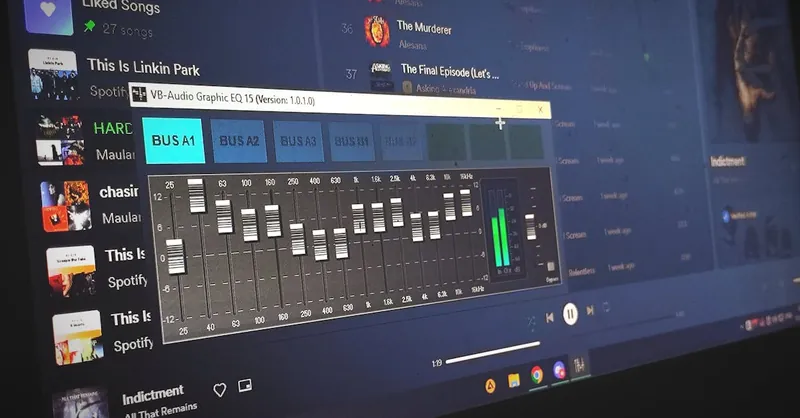
Image courtesy of Kenji Ogami
The Interaction Between Guitar Gear and EQ: Amps, Pedals, and Interfaces
Understanding how your guitar gear influences your EQ decisions is crucial for achieving a balanced and professional tone. Each element within your signal chain—amps, pedals, and audio interfaces—has its own frequency response characteristics that directly affect how and where you apply EQ. By recognizing these interactions, you can make smarter EQ choices that enhance your guitar sound rather than fight against your gear’s inherent tonal traits.
Amplifiers and EQ Interaction
Guitar amplifiers are often equipped with built-in EQ controls that shape your tone at the earliest stage in the chain. Tube amps, for example, naturally emphasize certain midrange frequencies and add harmonic richness, while solid-state amps may sound cleaner but sometimes lack warmth. When using the amp’s EQ:
- Identify your amp's tonal character first: If your amp already boosts mids between 800Hz and 1.5kHz, avoid excessive EQ boosts in that range, which can result in harshness or piercing highs.
- Use your external EQ to complement the amp’s response, such as cutting muddy low-mids around 200Hz if your amp tends to sound boomy.
- Remember that EQ applied after the amp (e.g., in the effects loop or in a DAW) affects the amplified sound differently than EQ applied before the amp, so placement is key.
Effect Pedals and EQ Considerations
Pedals add a variety of tonal flavors, but many—especially distortion, overdrive, and modulation effects—alter the frequency spectrum significantly:
- Distortion and overdrive pedals often boost midrange frequencies, which may call for subtle cuts around 500Hz to 700Hz to prevent honkiness.
- EQ pedals allow precise control, making them invaluable for tailoring your tone within a pedalboard; use them to shave off problematic resonances introduced by other effects.
- Consider where your EQ pedal sits in the signal chain: placing it before distortion can drastically change the pedal’s character, while placing it after allows fine-tuning of the overall distorted tone.
Audio Interfaces and Recording Gear Impact
When recording electric or acoustic guitars through audio interfaces or DI boxes, the hardware’s preamp and A/D conversion quality impact your recorded tone:
- Some interfaces impart slight color or warmth, modifying frequency balance, so EQ adjustments in your DAW should account for this coloration.
- Use clean, transparent preamps when possible to retain the natural guitar tone, applying corrective EQ after tracking for greater precision.
- Remember that any noise floor or tonal coloration introduced at the interface stage may require cuts in high-frequency ranges or low-end rumble reduction.
By integrating your EQ strategy with the specific tonal characteristics of your amplifiers, pedals, and interfaces, you build a cohesive signal chain that maximizes clarity, presence, and tonal balance. This approach not only prevents frequency conflicts but also harnesses the unique qualities of each gear component, empowering you to create a guitar tone that sounds rich, dynamic, and professional in any context.

Image courtesy of Alexey Demidov
Creative EQ Tips: Enhancing Harmonics, Presence, and Texture in Your Guitar Tone
Beyond the essential role of EQ in fixing problems and balancing frequencies, creative EQ techniques allow you to unlock new dimensions of character and expression in your guitar tone. Instead of using EQ solely for corrective measures, think of it as a powerful tool to highlight harmonics, amplify presence, and add unique texture that makes your guitar stand out with personality and depth.
Enhancing Harmonics for Richer, More Vibrant Tone
Harmonics are the overtones that give your guitar sound complexity and shimmer. By carefully boosting specific upper-mid and high frequency bands, you can accentuate these harmonic overtones — making notes sing with greater brilliance and sustain. Try gently boosting frequencies around 2.5kHz to 6kHz to bring out string harmonics and finger attack. This range adds sparkle without harshness when applied tastefully, especially useful for clean or mildly overdriven tones. For more aggressive or distorted tones, precision cuts around resonant frequencies combined with harmonic boosts can create a rich, textured soundscape that feels alive and dynamic.
Increasing Presence to Cut Through the Mix
Presence is what makes your guitar easily distinguishable in a busy band mix or crowded sonic environment. Creative EQ use for presence involves targeted boosts in the upper midrange (approximately 1kHz to 3kHz). Raising these frequencies selectively adds clarity and definition to each note, allowing your guitar to pierce through without sounding brittle or sharp. When combined with subtle low-mid cuts, this approach not only improves separation but also ensures your guitar tone feels full yet forward, ideal for solos, lead lines, and rhythm parts that demand attention.
Adding Texture and Character Through EQ Curve Shaping
Texture in guitar tone can be influenced significantly by shaping your EQ curves creatively. Experiment with:
- Narrow, resonant boosts using a high Q value to emphasize unique tonal peaks that complement your guitar’s natural voice or pickups.
- Gentle shelving boosts in higher frequencies for a smooth shimmer or airiness that enhances ambient and clean soundscapes.
- Surgical dips to carve out “notches” that create space and dimension, producing a more three-dimensional, tactile tone.
Combining these EQ practices with dynamic playing and effects can transform an ordinary guitar signal into an engaging, character-rich sonic experience that defines your style and musical identity.
By approaching EQ as a creative ally—rather than just a corrective tool—you empower yourself to craft guitar tones packed with harmonic richness, presence, and emotional texture that grab listeners’ attention and convey your artistic voice with impact. Incorporate these innovative EQ strategies alongside foundational techniques to truly make your guitar tone shine in both studio and live performances.
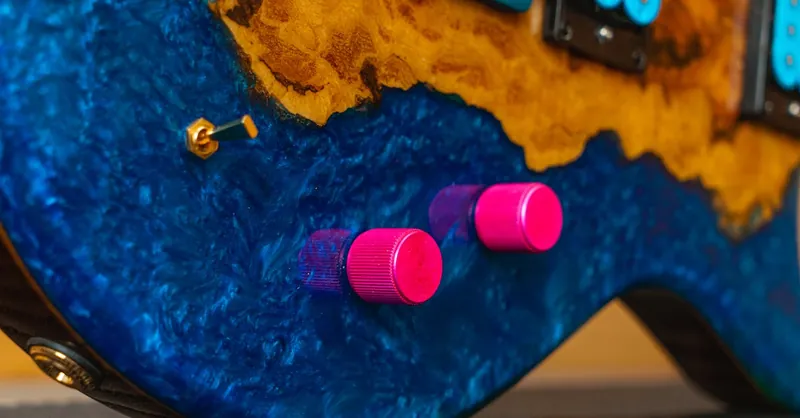
Image courtesy of Lucas Andrade
Setting Up EQ for Recording vs Live Performing: Tailoring Your Approach to Context
When it comes to shaping your guitar tone with EQ, the strategies and workflows you adopt can differ significantly depending on whether you're recording in a controlled studio environment or performing live on stage. Understanding these contextual differences is crucial for maximizing your guitar tone’s clarity and impact in either setting.
EQ Workflow for Recording Guitar
In the studio, you have the luxury of precise control and the ability to make detailed, surgical EQ adjustments that enhance your guitar tone without worrying about real-time constraints. Recording EQ focuses extensively on:
- Capturing the purest tone possible at the source—often starting with subtle high-pass filtering (around 80-100Hz) to remove rumble and carefully cutting problematic frequencies like muddiness (200-400Hz) or boxiness (400-600Hz) without sacrificing warmth.
- Surgical use of narrow bandwidth (Q) cuts and boosts using parametric EQs to sculpt the tone and make your guitar sit effortlessly in the mix alongside other instruments.
- Boosting presence and articulation (1kHz–3kHz) selectively to enhance note definition, especially for lead lines and solos.
- The ability to use multiple EQ stages, such as preamp or pedalboard EQ combined with DAW plugins, allowing for layered tone shaping and creative experimentation.
- Frequent referencing and A/B testing to ensure EQ adjustments improve the tone without compromising natural character or introducing harshness.
EQ Workflow for Live Performance
Live sound environments demand more immediate, reactive EQ settings that prioritize clarity and feedback control amid varying acoustics and instrumentation on stage. Key live EQ strategies include:
- Emphasizing midrange frequencies (800Hz–2kHz) to help your guitar cut through the mix in noisy venues, where clarity and presence are paramount.
- Using graphic EQ or parametric EQ with broader Q settings for quick, sweepable cuts to notch out feedback-prone frequencies, usually between 2kHz and 6kHz.
- Applying gentle high-pass filtering to reduce stage rumble and prevent mud buildup while maintaining body.
- Subtle cuts rather than aggressive boosts to avoid triggering stage monitor or PA feedback and to maintain a balanced sound that translates well across different rooms.
- The necessity to adapt EQ in real-time, depending on the venue acoustics, band dynamics, and monitor setups, making flexibility and experience invaluable.
Key Differences Summarized
| Aspect | Recording EQ Approach | Live Performance EQ Approach |
|---|---|---|
| Time for adjustment | Detailed, slow, iterative | Immediate, responsive, and dynamic |
| Type of EQ used | Parametric EQ for precision | Graphic EQ or broader Q parametric EQ |
| Primary goal | Tone perfection and mix integration | Clarity, feedback control, and stage presence |
| Frequency focus | Surgical cuts to address problem areas | Strong midrange emphasis and feedback notches |
| Workflow nature | Multiple EQ layers, A/B testing | Real-time tweaks based on venue acoustics |
By adopting distinct EQ setups and mindsets tailored to recording or live performance contexts, guitarists can ensure their tone remains rich, clear, and artistically compelling regardless of the environment. Optimizing your workflow to these contexts will not only streamline your technical process but also elevate the quality and consistency of your guitar sound in every musical situation.
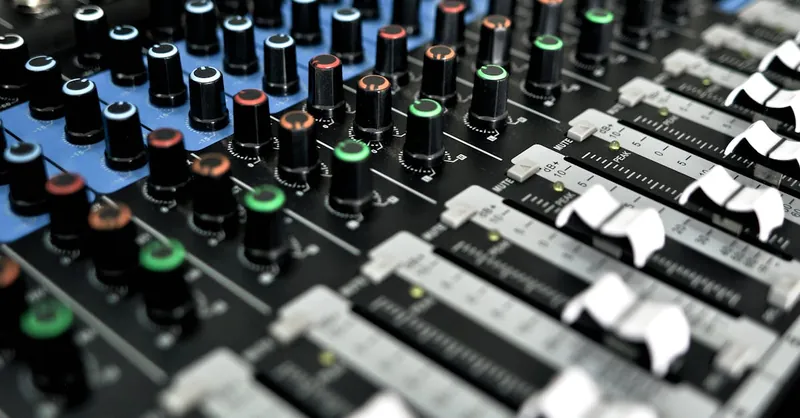
Image courtesy of jeff Photos
Common Mistakes When Using EQ on Guitar and How to Avoid Them
While EQ is an incredibly powerful tool for shaping your guitar tone, it's easy to make mistakes that can actually degrade your sound rather than improve it. Recognizing and avoiding these common pitfalls ensures your EQ moves enhance clarity, warmth, and presence without introducing undesirable artifacts or tonal imbalances.
1. Over-Boosting Frequencies Instead of Cutting
One of the most frequent mistakes guitarists make is reaching for aggressive boosts to “fix” weak tonal areas instead of using subtractive EQ to remove problematic frequencies. Excessive boosting can lead to:
- Unnatural sound coloration
- Increased noise and hiss
- Harshness or piercing tones especially in high mids and treble ranges
Best practice: Start by gently cutting muddy or harsh frequency ranges with narrow bandwidths, and use boosting sparingly and subtly to enhance presence or brightness.
2. Using Too Wide or Too Narrow Q Settings
Improper bandwidth settings can cause unintended tone shifts:
- A too-wide Q (broad curve) may affect large frequency ranges, dulling your tone or causing phase issues.
- A too-narrow Q (very tight cut/boost) might introduce sharpness or odd resonances that sound unnatural.
Sweet spot: Adjust the Q-value thoughtfully; use narrow Q for surgical cuts to tame specific resonances (e.g., boxiness at 400-600Hz) and wider Q for gentle tonal shaping that retains musicality.
3. Ignoring the Context of Mix and Playing Style
Applying the same EQ settings regardless of the mix or guitar style can result in your tone clashing or getting lost.
- EQ should complement the overall band mix, not just make your guitar sound good in isolation.
- Heavy boosting of mids might overpower vocals; excessive low-end thickening can muddy drums and bass.
Solution: Always EQ with your ears focused on the full mix or live context, making incremental adjustments based on how the guitar interacts with other instruments and your playing style.
4. Neglecting Phase and Signal Chain Order
EQ placement matters significantly:
- Applying EQ after distortion pedals yields a different tonal effect than EQ before distortion.
- Some plugins or pedals may cause phase shifts when extreme EQ moves are applied, impacting clarity and stereo imaging.
Tip: Experiment with EQ placement in your signal chain and use parametric EQ to minimize phase-related issues for a cleaner, more natural tone.
5. Over-EQing and Loss of Natural Guitar Character
Too many EQ adjustments can strip away the organic qualities and dynamics of your guitar tone, making it sound processed or lifeless.
- Overly aggressive cuts or boosts can kill the natural resonance and feel of your instrument.
- Avoid EQ “fixes” that compensate for poor playing technique or gear problems.
Keep it musical: Use EQ as a subtle sculpting tool, maintaining the character, dynamics, and expression that make your guitar tone unique.
By steering clear of these common EQ mistakes—over-boosting, improper Q settings, ignoring mix context, misplacing EQ in your signal chain, and over-processing—you can ensure your tone enhancements genuinely improve your guitar’s sound. Thoughtful, context-aware EQ use preserves your instrument's natural voice while giving you the control needed to cut through the mix and express your musical identity with confidence.
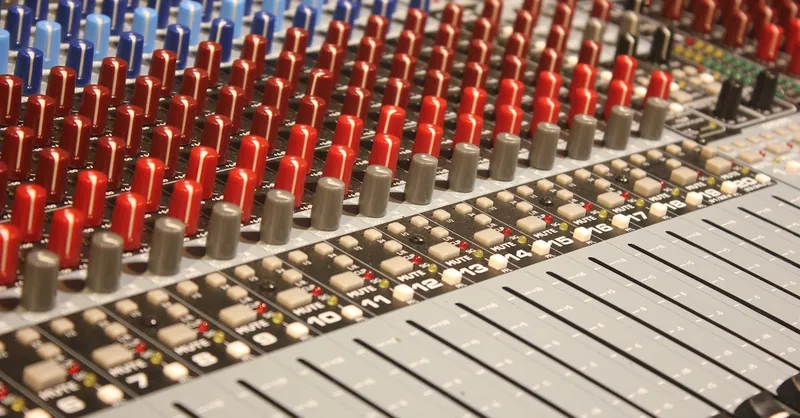
Image courtesy of Pixabay
